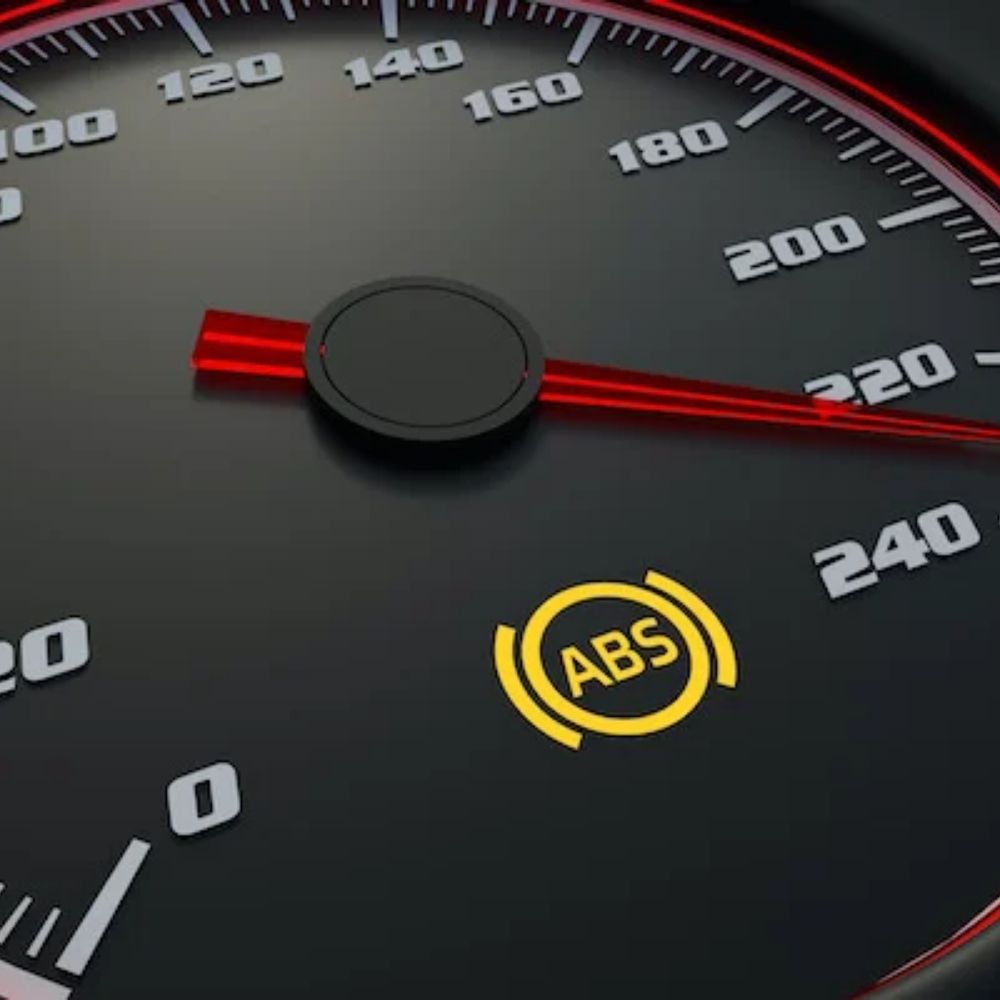
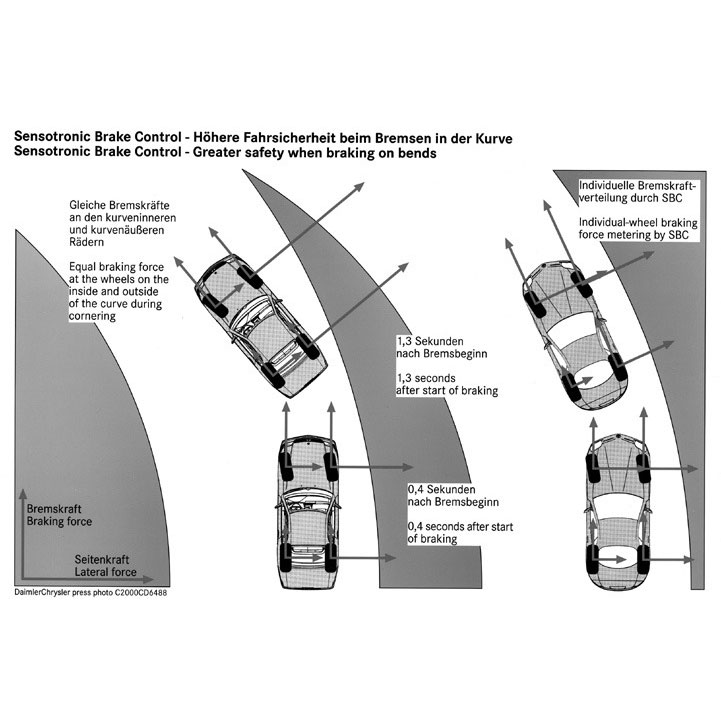
Understanding SBC Sensotronic Brake Control: How It Works and Why It Matters
Contents
- 1. What is SBC Sensotronic Brake Control?
- 1.1. The Impact of SBC on Vehicle Safety
- 1.2. Models Equipped with SBC Sensotronic Brake Control
- 2. Key Components of the SBC System
- 3. How the SBC Sensotronic Brake Control System Works
- 4. Advantages of SBC Sensotronic Brake Control
- 5. Comparison: SBC vs. Traditional Hydraulic Brakes
- 6. Challenges and Limitations of the SBC System
- 7. Common Issues and Problems with SBC
- 8. Measure to Repair SBC Systems
- 8.1. Hydraulic Pump Replacement
- 8.2. Sensor Replacement
- 8.3. ECU Reprogramming and Software Updates
- 8.4. Fluid Flush and Brake System Bleeding
- 9. The Future of Braking Technology
- 10. Addressing Common Concerns about SBC
- 11. Understanding SBC Recalls and Updates
- 12. Tips for Maintaining Your SBC System
- 13. How SBC Compares to Traditional Braking Systems
- 14. Real-World Examples of SBC Effectiveness
- 15. The Economic Benefits of SBC
- Conclusion
Modern braking systems have evolved far beyond mechanical linkages and hydraulic pressure. One of the most significant innovations in automotive braking technology came from Mercedes-Benz with the introduction of Sensotronic Brake Control (SBC). Often described as a “brake-by-wire” system, SBC represents a leap toward more precise, efficient, and intelligent vehicle braking. In this article, we’ll explain what SBC is, how it works, and why it plays an important role in advanced vehicle dynamics.
1. What is SBC Sensotronic Brake Control?
SBC, or Sensotronic Brake Control, is an electro-hydraulic brake system developed by Mercedes-Benz. It replaces the traditional vacuum-assisted braking system with an electronically controlled, high-pressure hydraulic system. The primary goal of SBC is to improve braking performance, enhance safety, and provide additional features like Brake Assist and Hill Start Assist.
SBC operates using sensors that monitor the driver’s braking intentions and various vehicle parameters. Based on this data, a sophisticated electronic control unit (ECU) precisely regulates the brake pressure at each wheel, optimizing braking force and stability. This system allows for faster and more precise braking responses compared to conventional systems.
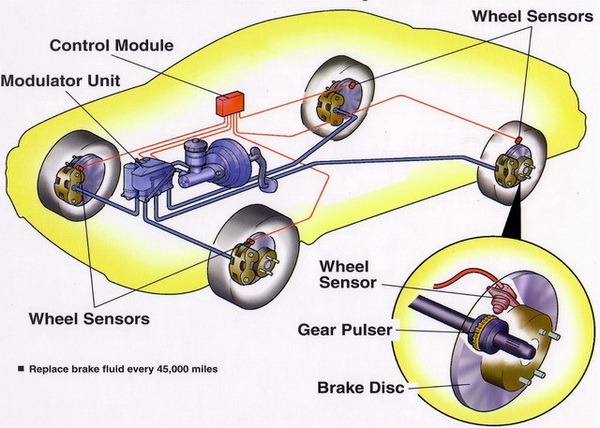
1.1. The Impact of SBC on Vehicle Safety
The Sensotronic Brake Control (SBC) system significantly enhances vehicle safety by providing advanced braking capabilities that surpass traditional systems. Its ability to independently control brake pressure at each wheel allows for optimized braking performance during various driving conditions.
- Emergency Braking: SBC’s Brake Assist feature automatically maximizes braking force during emergency stops, reducing stopping distances and minimizing the risk of collisions.
- Stability Control: SBC works in conjunction with the vehicle’s Electronic Stability Program (ESP) to maintain stability during sudden maneuvers or slippery road conditions.
- Traction Control: The system helps prevent wheel spin during acceleration, improving traction and control, especially on low-traction surfaces.
According to research by the National Highway Traffic Safety Administration (NHTSA), advanced braking systems like SBC can significantly reduce the risk of accidents and injuries.
1.2. Models Equipped with SBC Sensotronic Brake Control
Mercedes-Benz deployed SBC in several models between 2001 and 2006, including:
- E-Class (W211)
- SL-Class (R230)
- CLS-Class (W219)
- Some versions of the S-Class and CL-Class
Later models transitioned back to traditional hydraulic systems or evolved into next-generation brake-by-wire technologies.
2. Key Components of the SBC System
The SBC system comprises several key components that work together to deliver its advanced braking capabilities:
- Brake Pedal Sensors
When a driver presses the brake pedal, sensors measure the pedal travel and force. This information is sent electronically to the SBC control unit.
- SBC Control Module (ECU)
The control unit receives signals from the brake pedal sensors and other vehicle systems like the ABS, ESP, and yaw rate sensors. It calculates the required braking force for each wheel and sends commands accordingly.
- Hydraulic Pump and High-Pressure Reservoir
The system includes an electric hydraulic pump and a pressure reservoir that maintains the necessary brake fluid pressure to apply the brakes as needed.
- Brake Pressure Modulators
These modulators control the hydraulic pressure sent to each wheel, allowing precise control over the braking force applied.
A network of sensors provides real-time data to the control module, enabling dynamic brake force distribution and improved vehicle stability.
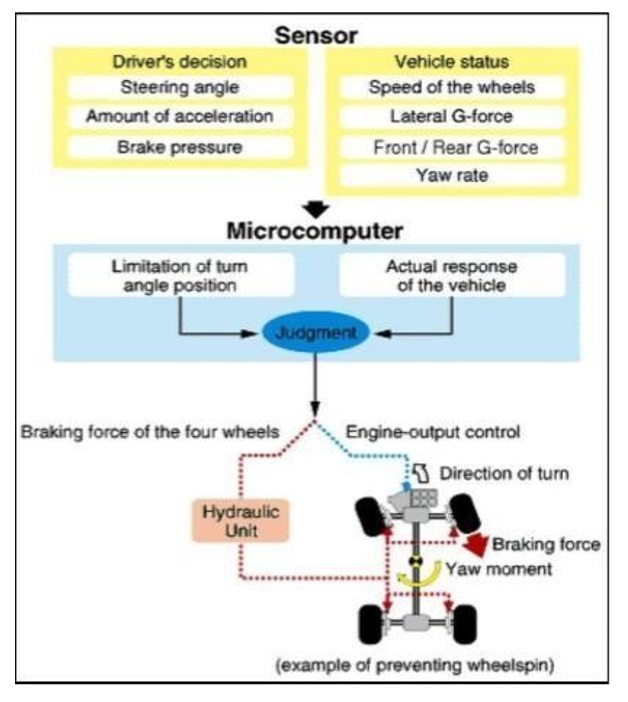
3. How the SBC Sensotronic Brake Control System Works
In a traditional brake system, pressing the pedal forces hydraulic fluid through the brake lines to each wheel. In contrast, the SBC Sensotronic Brake Control system works electronically:
Step-by-Step Process:
- Brake Pedal Activation: When the brake pedal is pressed, the action is recorded by sensors rather than directly transferring pressure through hydraulic fluid.
- Electronic Signal Transmission: The sensors send the data to the SBC control module, including pedal force, speed, and position.
- Control Unit Calculation: The control module calculates the optimal brake pressure needed for each wheel based on driving conditions.
- Hydraulic Actuation: The hydraulic pump generates pressure, which is modulated by valves to apply the precise amount of braking force to each wheel.
- Feedback Loop: The system continuously monitors and adjusts braking pressure using real-time feedback from various sensors.
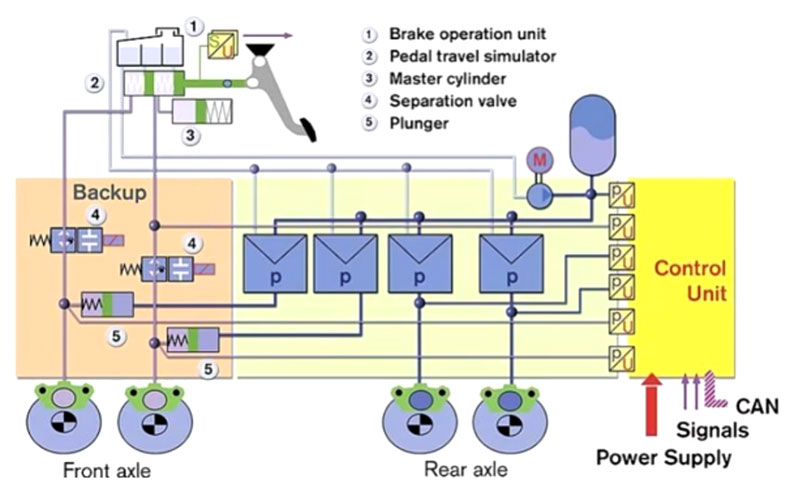
4. Advantages of SBC Sensotronic Brake Control
SBC offers several advantages over traditional braking systems:
- Improved Braking Performance: SBC enables faster and more precise braking responses, reducing stopping distances and enhancing safety.
- Enhanced Stability: The system’s ability to regulate brake pressure at each wheel helps maintain vehicle stability during braking, especially in emergency situations.
- Additional Features: SBC often includes features like Brake Assist, which automatically increases braking force during emergency stops, and Hill Start Assist, which prevents the vehicle from rolling backward on inclines.
- Comfort and Convenience: The system can provide a more consistent and predictable braking feel, enhancing driver comfort and confidence.
5. Comparison: SBC vs. Traditional Hydraulic Brakes
| Feature | Traditional Brakes | SBC Sensotronic Brake Control |
|---|---|---|
| Control Mechanism | Mechanical + Hydraulic | Electronic + Hydraulic |
| Brake Response Time | Slower | Faster |
| Brake Force Distribution | Basic | Adaptive (wheel-by-wheel) |
| Integration with ESP | Limited | Full Integration |
| Maintenance | Simpler | Complex and Costly |
6. Challenges and Limitations of the SBC System
Despite its advantages, SBC faced several issues that affected its long-term adoption.
1. Complexity and Cost
The system’s complexity made it expensive to produce and maintain. Repairs often required dealership-level tools and expertise.
2. Reliability Concerns
Some vehicles experienced failures in the SBC control unit or pump. Mercedes-Benz eventually recalled several models to address these issues.
3. Service Life Limitation
The system was programmed with a service life threshold (approximately 300,000 braking events), after which it would enter a fail-safe mode and require servicing.
4. Safety Protocols
In the event of system failure, SBC would revert to a hydraulic backup mode. While this ensured safety, it limited braking performance until the system was repaired.
7. Common Issues and Problems with SBC
While SBC offers numerous benefits, it is not without its potential issues:
- Hydraulic Pump Failure: The hydraulic pump is a critical component, and its failure can lead to a complete loss of braking assistance.
- ECU Malfunctions: Issues with the ECU can disrupt the system’s ability to regulate brake pressure, leading to unpredictable braking behavior.
- Sensor Failures: Faulty wheel speed sensors or brake pedal sensors can provide inaccurate data to the ECU, affecting braking performance.
- Software Glitches: Like any complex electronic system, SBC can be susceptible to software glitches that require reprogramming or updates.
- Limited lifespan: The SBC unit has a pre-determined lifespan that counts the number of times the brake pedal is depressed. After this threshold is met, the unit goes into a failsafe mode.
8. Measure to Repair SBC Systems
Repairing the SBC Sensotronic Brake Control system requires specialized diagnostic tools and a deep understanding of the electro-hydraulic brake architecture. Below are specific repair measures and procedures:
8.1. Hydraulic Pump Replacement
Cause: Wear and tear over time or internal seal failure can lead to reduced pressure or complete pump failure. Common symptoms include a red SBC warning light, noticeable braking delay, or an active fault code in diagnostics.
Replacement involves:
- Performing a diagnostic scan to confirm pump failure.
- Disconnecting the battery and depressurizing the system using dealer-level diagnostic software.
- Removing the hydraulic unit located in the engine bay.
- Installing a new or remanufactured SBC pump unit.
- Reprogramming the control module and bleeding the system using software-guided procedures.
8.2. Sensor Replacement
Cause: Sensors such as brake pressure, wheel speed, or yaw rate sensors can fail due to moisture ingress, aging, or electronic malfunction. Faulty sensors often trigger ABS/ESP/SBC warning lights or generate inaccurate braking behavior.
When replacing sensors:
- Identify the exact sensor with fault using diagnostic software.
- Replace only with genuine or high-quality OEM equivalents to ensure compatibility.
- Calibrate or reinitialize the sensor as required via the control module.
8.3. ECU Reprogramming and Software Updates
Cause: Software bugs, incomplete updates, or corrupted firmware in the SBC ECU can lead to erratic brake behavior or warning lights.
- Access the latest software version from Mercedes-Benz or a trusted service provider.
- Use Xentry or Star Diagnosis tools to flash or update the software.
- Clear all fault codes and perform a full system check post-update.
8.4. Fluid Flush and Brake System Bleeding
Cause: Brake fluid degrades over time due to moisture absorption, which lowers boiling point and may cause corrosion or hydraulic inefficiency.
- Use DOT 4+ or the brake fluid specified by Mercedes-Benz.
- Flush the entire system using a pressure bleeder in conjunction with diagnostic software to activate valves.
- Ensure all air is expelled, especially from each wheel’s caliper.
- Perform a final bleed through the SBC software menu to ensure no trapped air remains in the hydraulic block.
These repair procedures should only be carried out by qualified technicians with appropriate tools. Attempting DIY repairs on SBC systems without the correct knowledge can result in incomplete repairs or pose safety risks.
9. The Future of Braking Technology
SBC represents a significant step forward in braking technology, paving the way for even more advanced systems in the future. Some emerging trends in braking technology include:
- Brake-by-Wire Systems: These systems eliminate the mechanical connection between the brake pedal and the brake calipers, relying entirely on electronic signals and actuators.
- Regenerative Braking: This technology captures kinetic energy during braking and uses it to recharge the vehicle’s battery, improving fuel efficiency.
- Artificial Intelligence (AI) Integration: AI-powered braking systems can learn driver behavior and anticipate braking needs, further enhancing safety and performance.
AutoExplain is committed to staying at the forefront of braking technology, continuously updating our knowledge and skills to provide the best possible service to our customers.
10. Addressing Common Concerns about SBC
Despite its advantages, SBC has faced some criticism and concerns, particularly regarding its reliability and cost of repair. Here, AutoExplain address some of these concerns:
- Reliability: While early SBC systems experienced some reliability issues, Mercedes-Benz has made significant improvements to the system’s design and components.
- Cost of Repair: SBC repairs can be more expensive than traditional braking systems due to the specialized components and expertise required. However, AutoExplain offers competitive pricing and flexible repair options to minimize costs.
- Complexity: SBC is a complex system, but our technicians have the training and experience to diagnose and repair even the most challenging problems.
11. Understanding SBC Recalls and Updates
Over the years, Mercedes-Benz has issued several recalls and updates for SBC systems to address potential issues and improve performance. It is essential to stay informed about these recalls and updates to ensure the safety and reliability of your vehicle.
AutoExplain can help you determine if your vehicle is subject to any SBC recalls or updates and perform the necessary repairs or reprogramming.
12. Tips for Maintaining Your SBC System
Proper maintenance is crucial for ensuring the long-term reliability and performance of your SBC system. Here are some tips to follow:
- Regular Fluid Flushes: Flush and replace the brake fluid every two years or as recommended by the manufacturer.
- Inspect Brake Pads and Rotors: Regularly inspect the brake pads and rotors for wear and replace them as needed.
- Monitor for Warning Lights: Pay attention to any warning lights on the dashboard, especially those related to the braking system.
- Seek Professional Service: Have your SBC system inspected and serviced by a qualified technician at AutoExplain regularly.
13. How SBC Compares to Traditional Braking Systems
SBC represents a significant departure from traditional braking systems, offering several advantages and disadvantages:
| Feature | SBC | Traditional Brakes |
|---|---|---|
| Braking Force | Electronically controlled, precise regulation at each wheel | Vacuum-assisted, less precise |
| Response Time | Faster, more responsive | Slower |
| Stability | Enhanced stability control | Limited stability control |
| Additional Features | Brake Assist, Hill Start Assist | None |
| Complexity | More complex, requires specialized tools and expertise | Simpler, easier to repair |
| Cost | Potentially more expensive to repair | Less expensive to repair |
| Maintenance | Requires regular fluid flushes and inspections | Requires regular pad and rotor replacements |
14. Real-World Examples of SBC Effectiveness
Numerous real-world examples demonstrate the effectiveness of SBC in preventing accidents and improving vehicle safety. For instance, studies have shown that vehicles equipped with SBC have shorter stopping distances and better stability control in emergency situations.
Additionally, SBC’s Brake Assist feature has been credited with preventing numerous collisions by automatically maximizing braking force when drivers apply the brakes suddenly.
15. The Economic Benefits of SBC
While SBC repairs can be more expensive than traditional braking systems, the economic benefits of SBC can outweigh the costs in the long run:
- Reduced Accident Risk: By enhancing braking performance and stability, SBC can help prevent accidents, reducing repair costs and insurance premiums.
- Improved Fuel Efficiency: Regenerative braking systems, often integrated with SBC, can improve fuel efficiency by capturing kinetic energy during braking.
- Extended Component Life: Proper maintenance of the SBC system can extend the life of brake pads, rotors, and other components.
Conclusion
Sensotronic Brake Control (SBC) was a major innovation in automotive safety and control, setting the foundation for many technologies we see in modern vehicles today. While it had its share of challenges, SBC helped usher in a new era of precision braking, intelligent vehicle dynamics, and brake-by-wire evolution.
Understanding how it works can help drivers and technicians better maintain vehicles that use this system — and appreciate the engineering behind every press of the brake pedal.

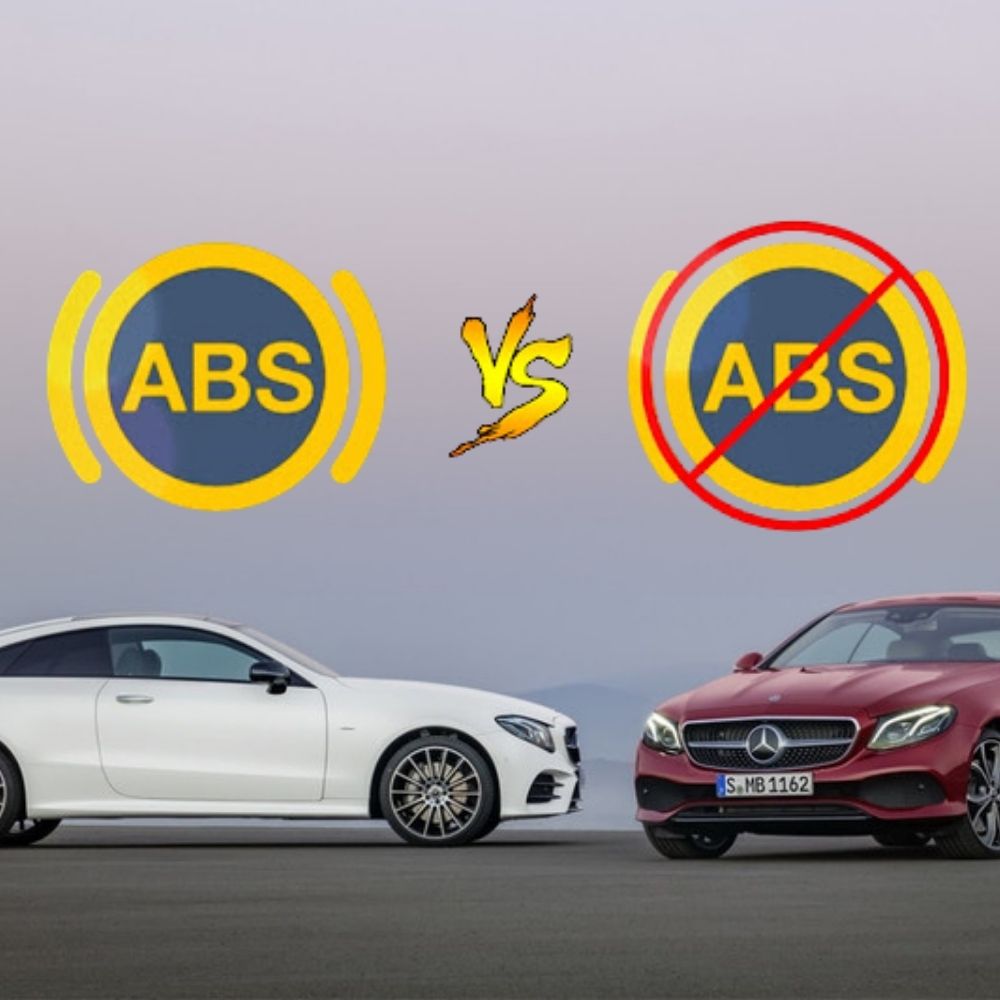
ABS vs Non ABS: What’s the Difference?
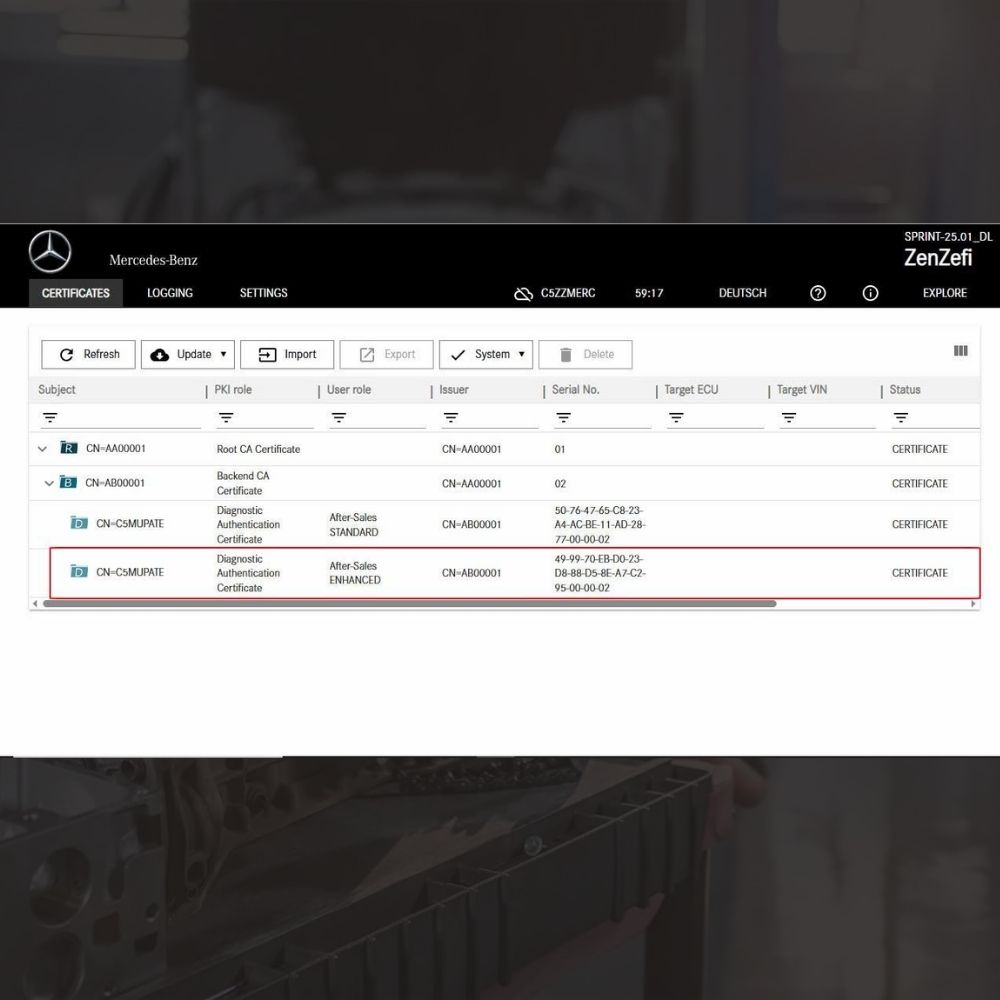
New Mercedes Car Coding Solution with ZenZefi certificate for DTS Monaco 9.02
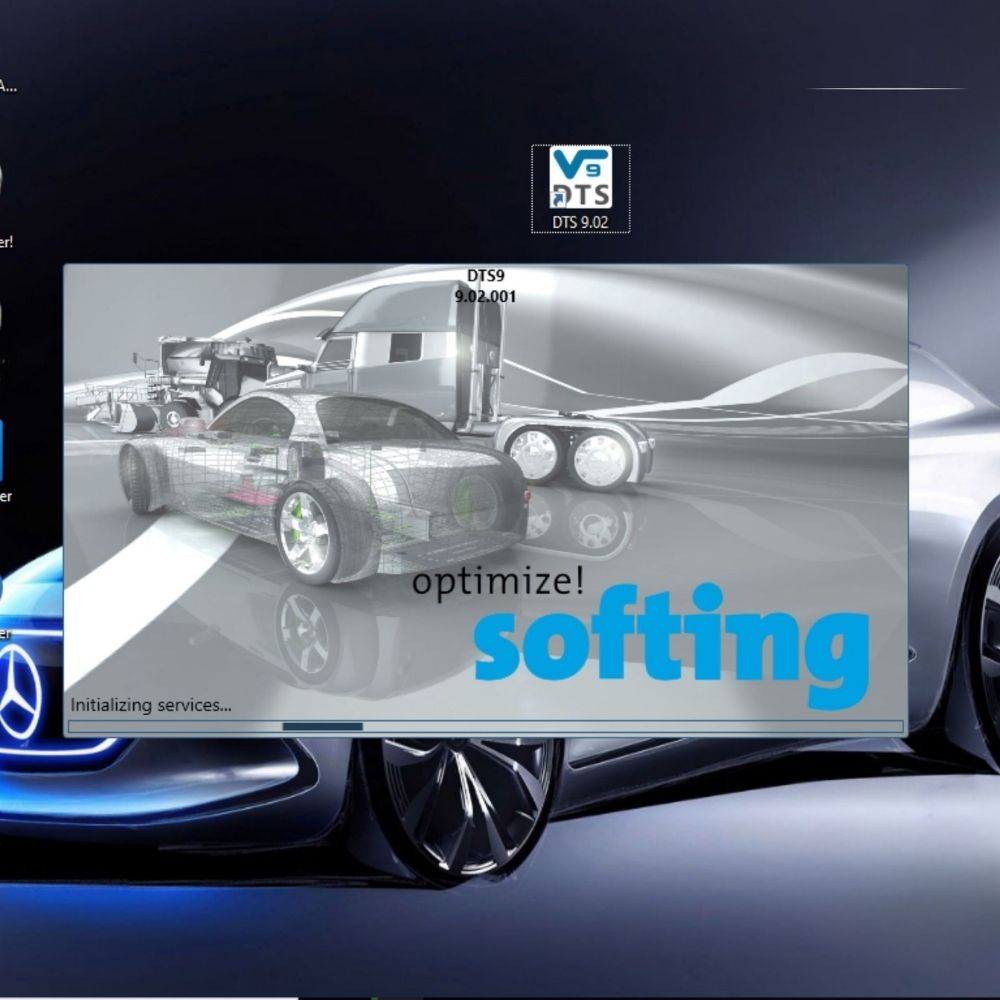
What is DTS Monaco? Key Functions of DTS Monaco Software








